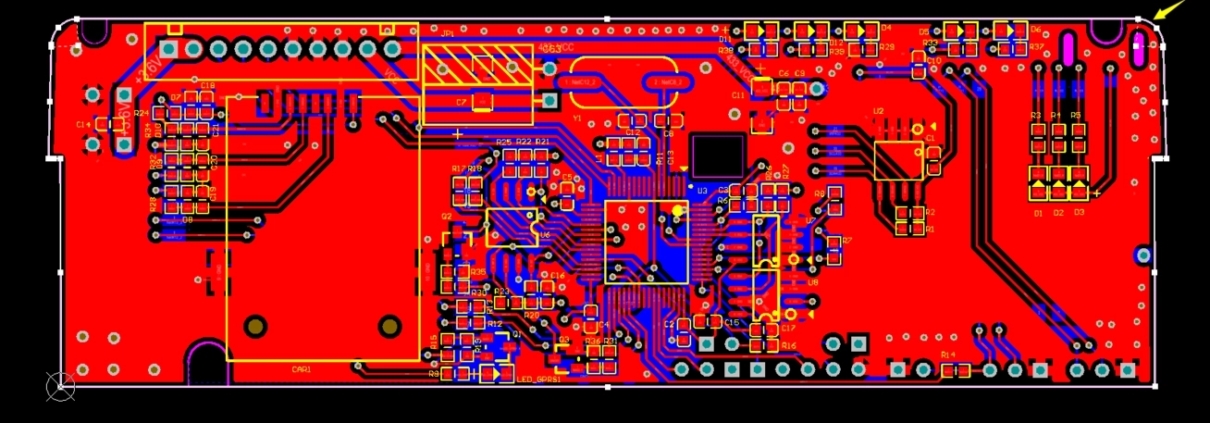How to design PCB safety spacing?
There are many places where safety distances need to be considered in PCB design. Here, they are temporarily classified into two categories: one is electrical-related safety distances, and the other is non-electrical-related safety distances.
1. Electrical related safety distances
1. Spacing between wires
As far as the processing capabilities of mainstream PCB manufacturers are concerned, the distance between wires must not be less than 4mil. Line spacing is also the distance from line to line and line to pad. From a production perspective, the bigger the better if conditions permit, and 10mil is more common.
2. Pad aperture and pad width
In terms of the processing capabilities of mainstream PCB manufacturers, the pad aperture should not be less than 0.2mm if mechanical drilling is used, and should not be less than 4mil if laser drilling is used. The aperture tolerance varies slightly depending on the board material. It can generally be controlled within 0.05mm, and the pad width must not be less than 0.2mm.
3. The spacing between pads
In terms of the processing capabilities of mainstream PCB manufacturers, the distance between pads must not be less than 0.2mm.
4. The distance between the copper sheet and the edge of the board
The distance between the charged copper sheet and the edge of the PCB board shall not be less than 0.3mm. As shown in the figure above, set this spacing rule on the Design-Rules-Board outline page.
If a large area of copper is laid, there is usually a shrinkage distance from the edge of the board, which is generally set to 20mil. In the PCB design and manufacturing industry, generally, engineers often lay large areas of copper out of mechanical considerations for the finished circuit board, or to avoid curling or electrical short circuits due to copper being exposed on the edge of the board. The block is retracted 20mil relative to the edge of the board instead of spreading the copper all the way to the edge of the board. There are many ways to deal with this copper shrinkage, such as drawing a keepout layer on the edge of the board, and then setting the distance between the copper laying and the keepout. Here is a simple method, which is to set different safety distances for copper-laying objects. For example, the safety distance for the entire board is set to 10mil, and the copper-laying setting is 20mil. This can achieve the effect of shrinking the edge of the board by 20mil, and at the same time Eliminates dead copper that may appear within the device.
2. Non-electrical related safety distances
1. Character width, height and spacing
No changes can be made to the text film during processing, except that the character line widths with D-CODE less than 0.22mm (8.66mil) are thickened to 0.22mm, that is, the character line width L=0.22mm (8.66mil), and the entire character The width = W1.0mm, the height of the entire character H = 1.2mm, and the spacing between characters D = 0.2mm. When the text is smaller than the above standards, it will be blurry when printed.
2. Via-to-via spacing (hole edge to hole edge)
The distance from via (VIA) to via (hole edge to hole edge) is greater than 8mil.
3. Distance from silk screen to solder pad
Screen printing is not allowed to cover the soldering pads. Because if the silk screen covers the soldering pad, tin will not be applied to the silk screen area during tin application, which will affect the mounting of components. Generally, board manufacturers require a spacing of 8mil. If the PCB board area is really limited, a 4mil spacing is barely acceptable. If the silk screen accidentally covers the pad during design, the board manufacturer will automatically remove the silk screen left on the pad during manufacturing to ensure that the pad is tinned.
Of course, the specific situation should be analyzed in detail during design. Sometimes the silk screen is deliberately placed close to the pads, because when the two pads are very close, the silk screen in the middle can effectively prevent the solder connection from short-circuiting during soldering. This situation is another matter.
4. 3D height and horizontal spacing on the mechanical structure
When mounting components on the PCB, it is necessary to consider whether they will conflict with other mechanical structures in the horizontal direction and spatial height. Therefore, when designing, it is necessary to fully consider the compatibility between components, between the finished PCB and the product shell, and the spatial structure, and reserve a safe distance for each target object to ensure that there is no spatial conflict.



